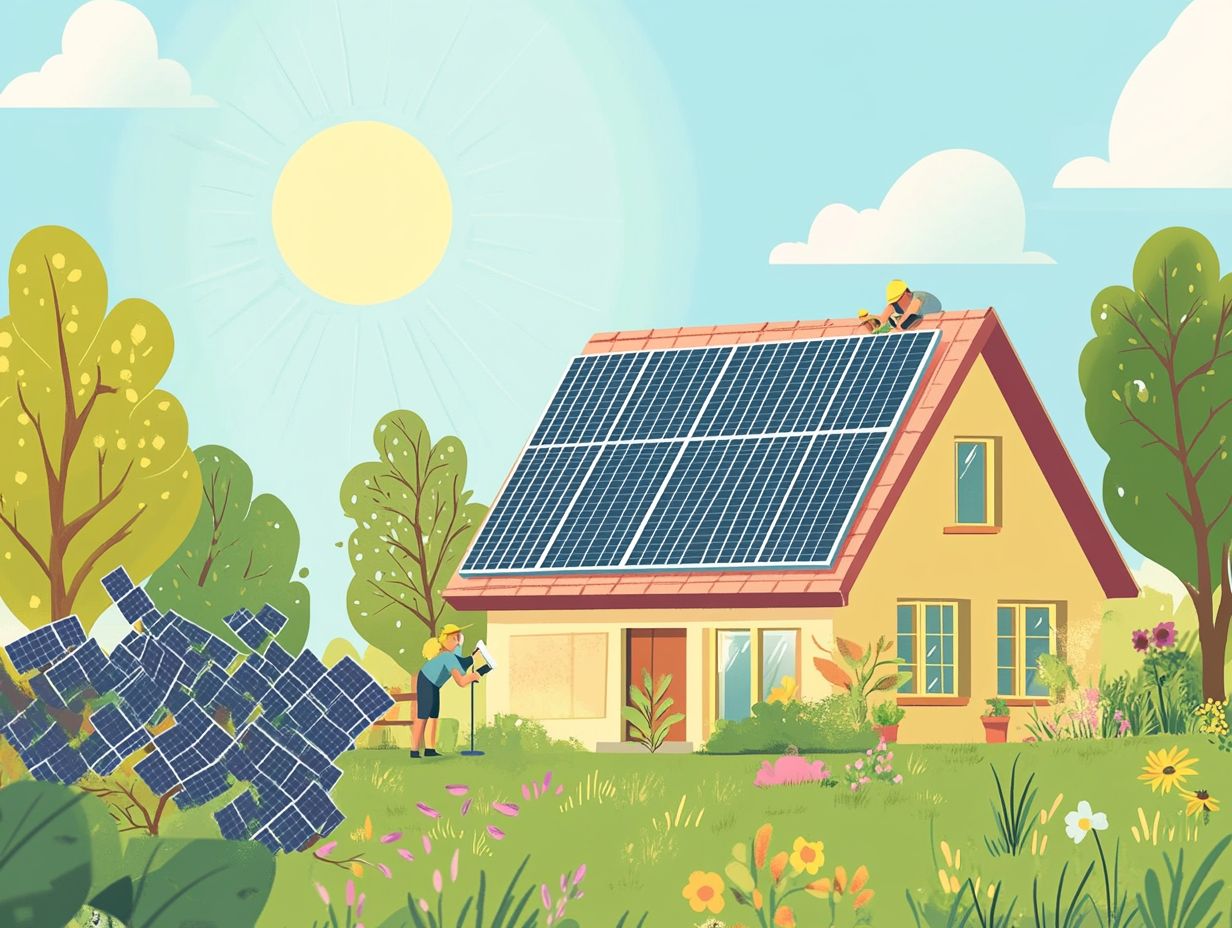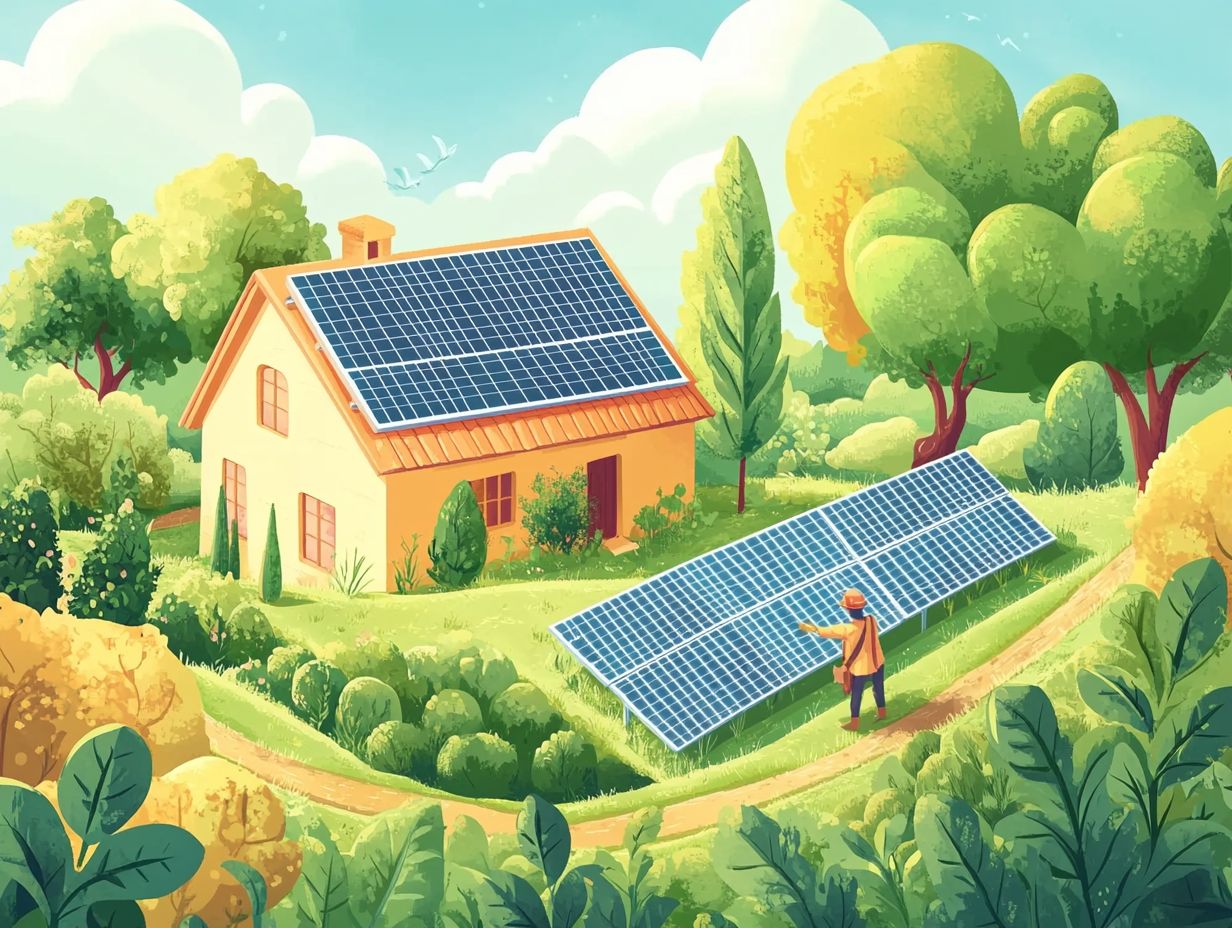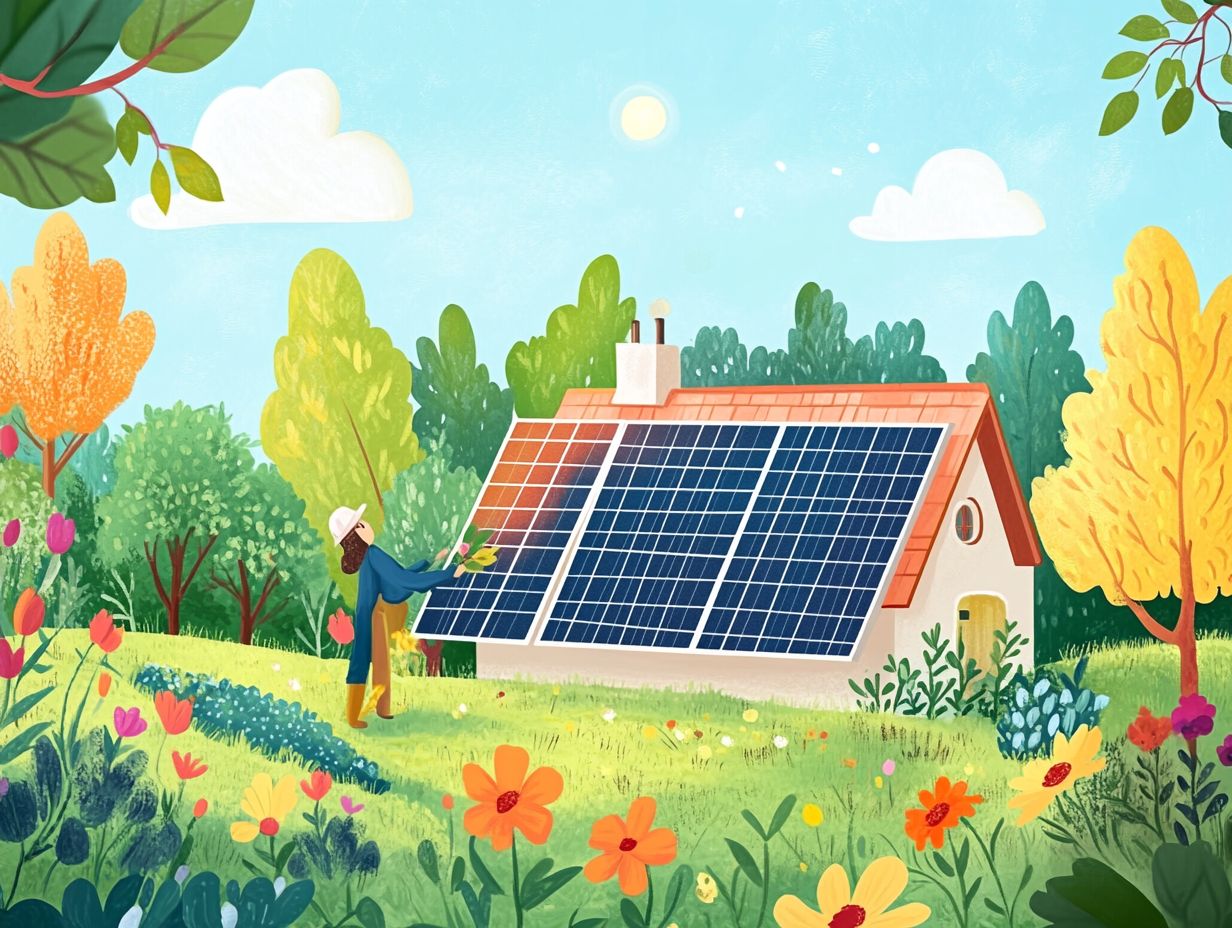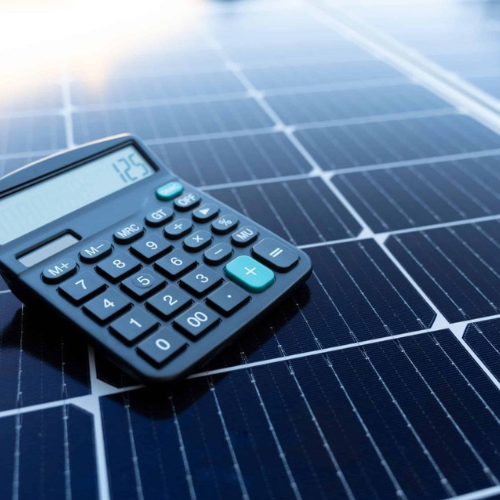Contents
- 1 Understanding Your Carbon Footprint
- 2 Why Solar Power is Essential for Reducing Your Carbon Footprint
- 3 How Solar Power Works
- 4 Installing Solar Panels
- 5 Maximizing Solar Power Efficiency for Homeowners
- 6 Other Ways to Reduce Your Carbon Footprint
- 7 Frequently Asked Questions
- 7.1 What is a Carbon Footprint, and Why is Reducing It Important?
- 7.2 How does solar power help in reducing my carbon footprint?
- 7.3 What are the Financial Benefits of Reducing My Carbon Footprint with Solar Power?
- 7.4 Do I need to completely rely on solar power to reduce my carbon footprint?
- 7.5 How Reliable is Solar Power for Reducing My Carbon Footprint?
- 7.6 Are there any downsides to using solar power for reducing my carbon footprint?
As concerns about climate change grow, understanding and reducing your carbon footprint has become more important than ever, especially with the rising focus on carbon-neutral initiatives and sustainable energy solutions.
One effective way you can make a significant impact is by harnessing solar power and other renewable energy sources.
This article dives into what a carbon footprint is, the environmental and financial benefits of using solar energy, the role of photovoltaic systems, and how it all works.
You’ll also get a step-by-step guide on the solar installation process, along with tips to maximize energy efficiency, and explore other sustainable practices to help you further minimize your environmental footprint on the planet.
So, let’s embark on this journey toward a greener future together!
Understanding Your Carbon Footprint

Understanding your carbon footprint is key if you want to take real steps toward reducing carbon emissions and tackling climate change.
Your carbon footprint measures all the greenhouse gases you emit, both directly and indirectly, through your actions—think energy use and transportation.
Once you recognize your personal impact, you can start putting strategies in place that promote environmental sustainability, like conserving energy and living more eco-consciously by using clean energy and considering energy audits.
This awareness gives you the power to make informed choices that align with sustainable living practices and contribute to the global fight against global warming.
Wiedmann, T., & Minx, J. (2008). A definition of ‘carbon footprint’. Ecological Economics, 65(2), 243-251. Link
Defining Your Carbon Footprint: What It Is and Why It Matters
A carbon footprint is basically the total amount of carbon dioxide and other greenhouse gases you emit—whether directly or indirectly—throughout your life, whether that’s from your personal actions, your organization, or even the products you use.
Your footprint isn’t just about what you do daily; it’s shaped by a bunch of factors. Take your transportation choices, for instance—are you driving your car around or taking public transit? Are you considering fossil fuel alternatives? Then there’s your energy consumption at home and work, and whether you are using energy-efficient appliances and practices. The types of energy you rely on, like whether you’re using renewable sources or fossil fuels, really impact your emissions too, influencing your overall energy resilience and carbon accounting.
Plus, think about your consumption habits—how often you buy things and where those products come from adds another layer to this whole environmental puzzle.
By diving into these factors, you can start pinpointing practical steps to reduce your footprint, such as adopting solar energy solutions and embracing green technology. This way, you’ll not only help cut down on carbon emissions but also contribute to a more sustainable future for our planet.
Why Solar Power is Essential for Reducing Your Carbon Footprint
The benefits of solar power for reducing your carbon footprint are pretty impressive, making it a real game-changer in the world of clean energy solutions.
By tapping into solar energy, you can significantly cut back on your reliance on fossil fuels, lower your carbon emissions, and do your part for a healthier planet while boosting your energy independence.
Solar technology not only supports environmental sustainability but also boosts your energy independence with renewable sources that are both abundant and eco-friendly.
When you invest in solar power systems, you get to enjoy energy savings and reduced utility bills while actively joining the fight against climate change and contributing to energy transition strategies.
The Positive Environmental Impact of Solar Power
The environmental impact of solar power is overwhelmingly positive, making a significant dent in greenhouse gas emissions and encouraging the use of renewable resources.
When you harness energy from the sun, you tap into a clean source that effectively cuts down reliance on fossil fuels, which are notorious for their carbon emissions, promoting efficient electricity generation. Many communities are discovering that as they switch to solar energy, they see a drop in pollution levels, leading to better air quality and healthier ecosystems.
This shift to solar fits perfectly with sustainable development goals, especially those focused on affordable and clean energy for everyone. In this way, solar power not only tackles immediate environmental issues but also helps build long-term resilience against climate change, positioning itself as a key player in the global push for a more sustainable future and energy transition.
Cost Savings
Implementing solar power not only provides environmental benefits but also leads to significant cost savings for homeowners and businesses alike. By reducing or even eliminating electricity bills, solar energy systems can pay for themselves over time through energy cost reductions. Additionally, many regions offer incentives and tax credits for solar installations, further improving the financial viability of switching to renewable energy sources.
Overall, investing in solar technology is a smart financial decision that aligns with sustainable practices, helping you save money while reducing your carbon footprint.
Switching to solar power isn’t just about being eco-friendly; it’s also a savvy way to cut down on your energy bills over time by leveraging solar incentives and tax credits.
You might find that many homeowners experience significant reductions in their monthly utility expenses, freeing up cash to put towards other essentials or future investments.
When you’re thinking about the initial costs of solar installation, don’t forget to consider the solar incentives, government rebates, and solar financing options out there. These can really help lower that upfront investment you need to make.
With these financial perks, using solar energy becomes not just good for the planet but also a smart economic move with substantial energy savings. Over the years, the savings can add up, leading to a more sustainable lifestyle.
You can take pride in contributing to a greener planet while reaping the financial benefits solar energy brings your way.
How Solar Power Works

Understanding how solar power works is key to appreciating its role in sustainable energy production and cutting down carbon footprints, contributing to environmental responsibility.
Solar power systems mainly depend on solar panels, which are made up of photovoltaic cells that turn sunlight directly into electricity. This process taps into the clean energy from the sun, making it a renewable resource that really helps reduce greenhouse gas emissions.
By converting sunlight into electricity, you can harness clean, renewable energy for your home or business, boosting energy efficiency and paving the way for a more sustainable future with energy autonomy.
Solar Panels and Energy Conversion
Solar panels are pretty crucial in the energy conversion game, using photovoltaic technology in photovoltaic panels to turn sunlight into solar electricity.
This cool tech consists of a few essential parts, like solar cells, an inverter, and a mounting system. The solar cells, usually made from silicon, soak up sunlight and generate direct current (DC) electricity thanks to the photovoltaic effect, contributing to efficient electricity generation.
Then, the inverter steps in to convert that DC electricity into alternating current (AC), which is what you can use to power your appliances at home or in your business.
By tapping into the clean energy from the sun, solar panels help you cut down on fossil fuel dependency, which means lower electricity bills and a smaller carbon footprint, advancing carbon reduction efforts.
Plus, with solar technology getting more efficient all the time, it’s not just about being effective—it’s also about paving the way for a sustainable, renewable energy future.
Installing Solar Panels
Installing solar panels is a big move towards tapping into solar power and boosting energy efficiency in your home or business, promoting sustainable living.
The solar installation journey kicks off with checking out your property’s suitability for solar energy, which means taking a look at things like how much sunlight you get and the direction your roof faces for optimal solar resource assessment.
Plus, with all the solar incentives and government rebates out there, this solar investment not only promotes sustainable living but also provides substantial long-term financial benefits.
Getting a handle on the installation process can help you make the most of all the benefits that come with renewable energy.
Process and Considerations
When you embark on the journey of installing solar panels, there are a few key things you need to consider to make sure you get the best energy efficiency and performance.
First off, you’ll want to think about choosing the right solar power technologies that match your specific energy needs, be it residential solar or commercial solar. It’s a bit of a maze with permitting and regulations, but don’t worry; each step is super important, especially for grid integration and net metering.
Start by researching the available technology options, like monocrystalline and polycrystalline solar panels, and even solar thermal systems. They each come with their own perks when it comes to efficiency and cost.
Once you’ve picked your preferred technology, don’t forget to get the necessary permits from your local authorities to stay on the right side of the law. Then, figure out how to coordinate the grid connection; this will determine how well your system will mesh with the existing infrastructure, ensuring smooth energy production and consumption.
Following these steps lays down a solid foundation for an effective energy solution, letting you fully tap into all the benefits that solar energy can offer.
Maximizing Solar Power Efficiency for Homeowners
Maximizing solar power efficiency is key for boosting energy production and making sure your investment in solar energy systems and green energy solutions pays off.
Tips for Optimal Energy Production

To get the most out of your solar panels, think about implementing some effective energy conservation strategies and solar maintenance practices.
Regular maintenance is key to keeping these systems running at their best, ensuring long-term energy resilience. One of the best tips is to inspect the panels regularly for any debris, like leaves or dust, that could be blocking sunlight and cutting into your energy efficiency, thereby improving your overall system performance.
Cleaning the surface with a little soap and water—or just a soft brush—can do wonders for maintaining solar array efficiency. It’s best to tackle this in the early mornings or late afternoons when the panels are cooler.
Also, consider optimizing the placement of your solar panels. Positioning them to soak up the maximum sunlight all day long, and making sure they’re not in the shadow of trees or tall buildings, can really boost their energy conversion capabilities and overall energy production.
You can expect significant energy savings and enhanced efficiency in your energy production!
Other Ways to Reduce Your Carbon Footprint
Besides using solar power, there are plenty of other ways you can effectively reduce your carbon footprint, embrace eco-friendly practices, and explore energy alternatives.
Additional Sustainable Practices
Adopting additional sustainable practices can really amp up your efforts in cutting down carbon emissions and embracing an eco-friendly lifestyle, contributing to a low carbon economy.
For instance, incorporating habits like composting organic waste not only helps enrich soil health but also keeps waste out of landfills. Think of it as giving back to the earth while making your garden flourish and reducing your ecological footprint.
Using energy-efficient appliances is another smart move towards energy efficiency. You’ll curb your electricity usage and see those utility bills shrink, creating a win-win for both the planet and your wallet.
And don’t overlook the simple measures to reduce water usage! Fixing leaks, opting for low-flow fixtures, and even harvesting rainwater can make a big difference in water conservation and sustainable living.
When you put all these strategies together, they fit perfectly into a holistic approach to sustainable living, giving you and your community the power to make a real impact for a healthier planet and reducing greenhouse gas emissions.
United Nations Environment Programme (UNEP). (2020). Emissions Gap Report 2020. Link
Frequently Asked Questions
What is a Carbon Footprint, and Why is Reducing It Important?
A carbon footprint is the total amount of greenhouse gases produced by human activities. It is important to reduce it in order to mitigate the effects of climate change, protect the environment, and transition to a low carbon economy.
How does solar power help in reducing my carbon footprint?

Solar power produces clean and renewable energy, which does not emit greenhouse gases. By using solar power systems, you can significantly reduce your carbon footprint and contribute to a greener planet.
What are the Financial Benefits of Reducing My Carbon Footprint with Solar Power?
Yes, using solar power can help you save money on your energy bills in the long run. Additionally, some governments offer solar incentives and tax credits for using renewable energy sources, including solar power, making it an attractive solar investment.
Do I need to completely rely on solar power to reduce my carbon footprint?
No, you can also reduce your carbon footprint by implementing small changes in your daily habits, such as using public transportation, reducing waste, and choosing energy-efficient appliances. Adopting eco-friendly practices and energy conservation strategies can also contribute to carbon reduction.
How Reliable is Solar Power for Reducing My Carbon Footprint?
Yes, solar power has become increasingly reliable and efficient over the years. With proper maintenance, solar panels and photovoltaic systems can last for decades, making it a sustainable and reliable energy source to reduce your carbon footprint.
Are there any downsides to using solar power for reducing my carbon footprint?
Although there are initial costs associated with solar installation, the long-term benefits significantly outweigh this investment. The energy produced by solar power can be influenced by weather conditions, making it less consistent than traditional energy sources. However, advancements in solar technology, such as solar batteries and energy storage solutions, have greatly improved reliability. Overall, adopting solar energy is a wise choice for both the environment and your long-term savings.







